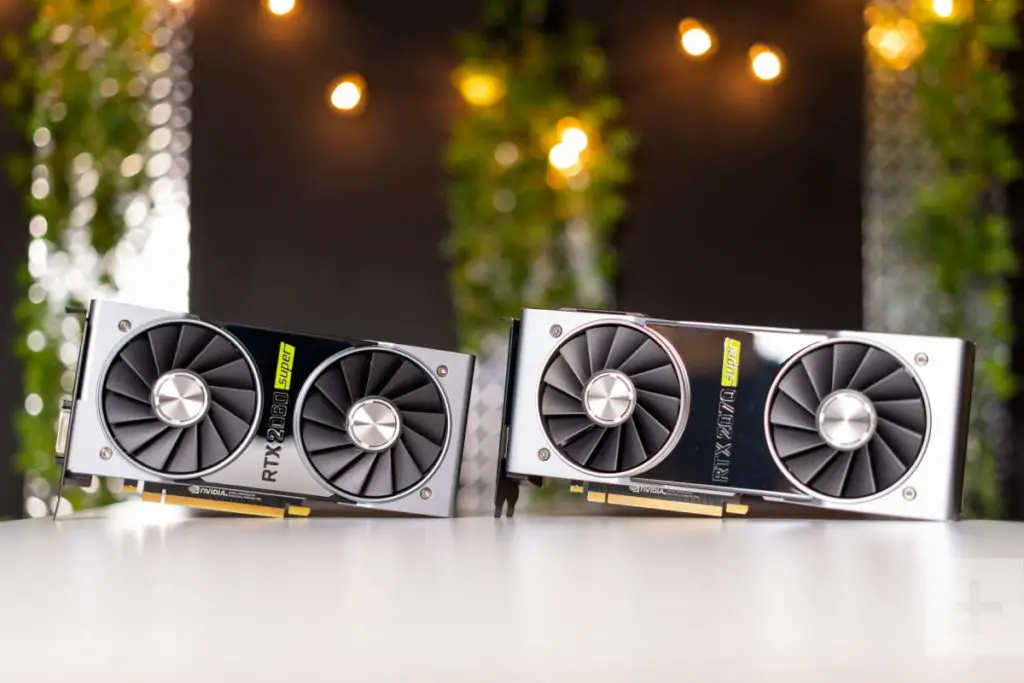
Experienced PC buyers keep their finger on the pulse and keep abreast of the situation on the Graphics card market. But this year there were too many new products, and prices for them are jumping every month due to which the video card, which was a bestseller yesterday, can already become a dubious liquid asset today. Special thanks for this should be said to NVIDIA, which has thrilled prices for the new generation RTX 20xx and released a pack of improved cards with the SUPER index.
If you are looking for the best video card, but don’t want to bother with all these nuances, then be sure to check out our latest selection of the best graphics cards under 400. This is the most interesting category of video adapters that guarantee maximum performance in any modern game, and in some cases even allows you to rely on gaming in 4K resolution.
best graphics cards under 400 Dollars
| Best GPU Under 400$ | Check Pirce | |
| 1 | Sapphire Radeon RX 580 PULSE 8G G5 11265-05 | Check Price at Amazon |
| 2 | MSI GeForce GTX 1660 Ti Gaming X 6G | Check Price at Amazon |
| 3 | Gigabyte GeForce RTX 2060 OC 6G | Check Price at Amazon |
| 4 | MSI Radeon RX 5700 8G | Check Price at Amazon |
| 5 | Palit GeForce RTX 2060 SUPER DUAL | Check Price at Amazon |
5 Best Graphics Cards Under 400 $
Below are complete pros, cons, and reviews of the best graphics card under 400 you can buy.
1. Sapphire Radeon RX 580 PULSE 8G G5 11265-05
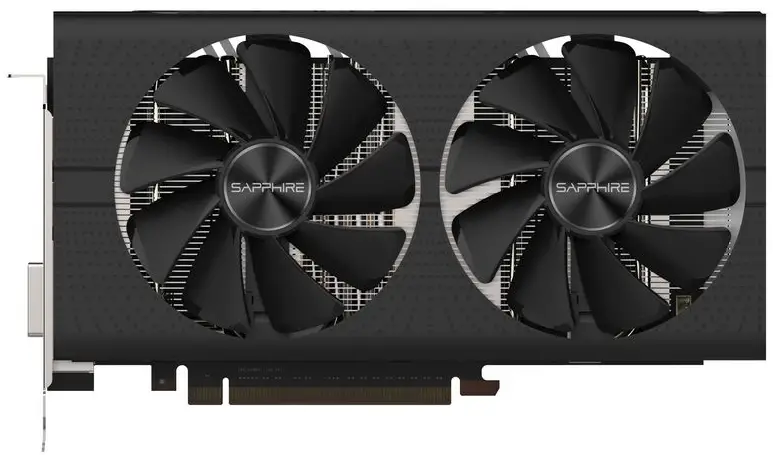
Sapphire accustomed gamers to the fact that in the form of Nitro and Pulse cards they get almost the standard ratio of dollars paid for each FPS. This modification of the RX 580 was no exception to the rule. The video adapter works at an increased core frequency and in many games is slightly inferior to the overclocked Radeon RX 480.
In terms of design, this video card differs little from other Sapphire models of the Nitro and Pulse series: a pseudo-perforated cover that can be easily removed, a power 6 + 8 pin connector in the corner, a BIOS switch closer to the rear panel to change the operating mode from standard quiet to noisy accelerated. The video card is made on a high-quality printed circuit board and is equipped with powerful thoughtful cooling. A massive heatsink with two large fans maintains moderate GPU operating temperatures and cools VRM well with low noise.
But the most interesting remained in the end. In some stores, the RX 580 PULSE can be found for a very modest $ 220, that is, almost 2 times cheaper than the popular mid-range cards GeForce GTX 1660 Ti and Radeon RX 5700 . Yes, the gap in productivity between them will be decent (up to 45%), but not twice, as in the case of the price. Despite the archaic architecture by modern standards, the RX 580 still provides at least 50 FPS in any modern toy with high graphics settings and Full HD resolution, which makes it a bestseller even 3 years after the release. And 8 GB of video memory looks great even by the standards of the coming 2023. In general, this is all the perfect candidate for an optimal mid-range gaming PC. Fresh GTX 1660It costs the same, but it doesn’t pull, and the old GTX 1060 pulls as it should, but finding it at the right price will not be so easy.
Recommended for You: How to choose graphics card: Best Graphics Card Buyers Guide
2. MSI GeForce GTX 1660 Ti Gaming X 6G
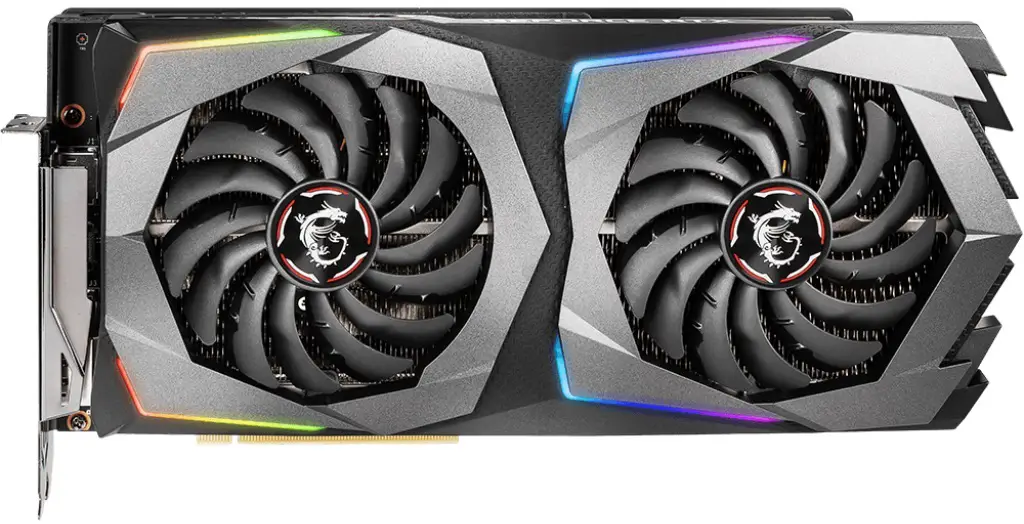
After successfully capturing the upper price segment using the GeForce RTX 20 line, NVIDIA began to strengthen its position in the range of $ 200 – 300. To do this, the company released a pack of new GTX 16 cards on the same new Turing microarchitecture, but without the support of hardware ray tracing, unnecessary for many. The MSI GTX 1660 Ti presented in this review is essentially the direct descendant of the most popular GTX 1060 graphics card of recent years .
The novelty costs more than its predecessor by an average of 20%, but also in terms of performance goes ahead with a comfortable margin. No joke, in the new COD Modern Warfare 1660 Ti with Ultra settings it gives out 40 FPS more – 118 against 78. In most modern games, the FPS increase is from 25 to 35%, and in some cases all 40%. In essence, this is performance at the near-top-level GTX 1070 of the previous generation, which almost did not remain on store shelves.
If we talk about a specific modification of Gaming X from MSI, then this is one of the best representatives of the GTX 1660 Ti. Here you have an adequate price, and powerful factory overclocking GPU, and good overclocking potential of memory, and a powerful but quiet cooling system, and a pumped-up board design with cooling of power elements, memory chips and a protective plate on the back of the PCB. Well, do not forget about RGB-backlighting. Well, thanks to the increased core frequency, the performance of the MSI GeForce GTX 1660 Ti GAMING X is almost on par with the basic version of the RTX 2060 .
3. Gigabyte GeForce RTX 2060 OC 6G
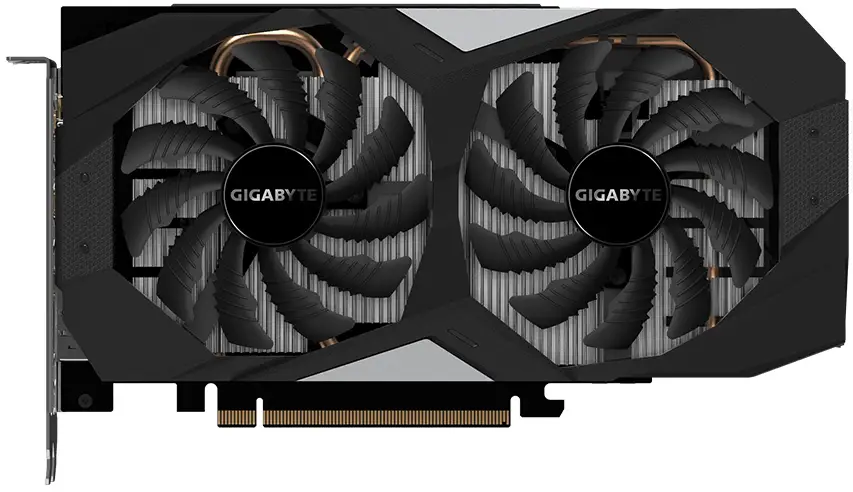
At the end of 2018, NVIDIA introduced a new line of top-end 20xx video cards based on the updated Turing architecture. The cards turned out to be expensive, powerful, and in fact, replaced the recent hits of the GTX 1070 and 1080. The main feature of the new line was hardware support for DLSS-smoothing or ray tracing. It is on the latter that NVIDIA makes a big emphasis since, in theory, it will help to create truly realistic lighting, reflections, and shadows in games. Take look here Best Graphics Card Under 200$.
Among a bunch of different variations of RTX 2060 from Gigabyte, this card occupies a middle niche in the internal hierarchy. It is positioned as the “middle ground” between the flagships of the Aorus series and simpler modifications. Among its main advantages, it is worth highlighting the original printed circuit board, high-quality elemental base and an enhanced power subsystem, as well as an intelligent cooling system with a number of interesting features. True, the manufacturer’s desire to equip the video card with a powerful cooler entailed a significant increase in size and rather loud operation of coolers under load, which should be considered before buying. Separately, we note the presence of LED-backlight, factory overclocking and a metal base plate.
The characteristics differ from the standard version of RTX 2060: the core frequency increased to 1755 MHz. By manually overclocking the kernel, you can squeeze an additional 60 – 80 MHz, obtaining a total increase in gaming performance by 5%. If we move from dry numbers to real examples, then with 4K resolution and Ultra Assassin’s Creed Origins graphics settings this card will produce quite comfortable 35 FPS. In less demanding projects, you can count on all 50 FPS. However, for gaming in 4K – this is a slippery topic and for it is still better to look towards the older RTX 2070 and 2080, which have a margin of safety for the future. For everything else, the Gigabyte GeForce RTX 2060 OC 6G is enough for the eyes.
4. MSI Radeon RX 5700 8G
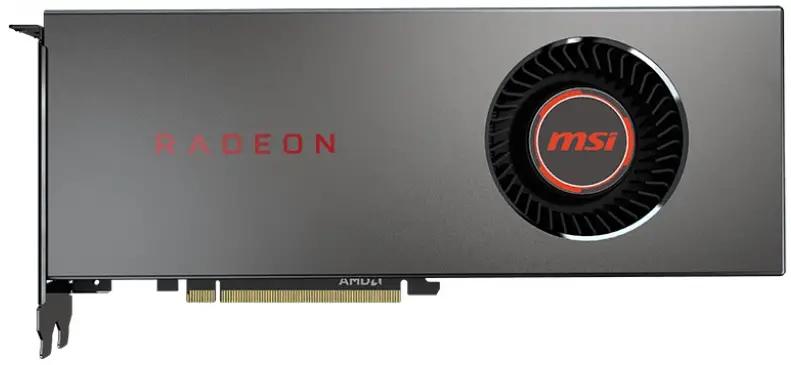
In the new cards of the Navi family, she did not rely on advanced technological process, but on a completely new RDNA logic. Unlike the old GCN, the new logic supports the 7-nm process technology, fast GDDR6 memory, PCI Express 4.0 interface and generally works faster with lower power consumption. According to tests, the performance gain by 1 W grew 1.5 times, and this gives serious hope that the new cards of the Navi family will not be as voracious as before.
The MSI RX 5700 variant follows the reference card completely. It boasts 2304 stream processors, 160 texture units, a core operating frequency of 1725 MHz and 8 GB of GDDR6 video memory operating at a frequency of 14000 MHz. In fact, it is a direct competitor to the GeForce RTX 2060 SUPER , only without the support of hardware ray tracing. On Ultra settings and Full HD resolution, the RX 5700 shows the following picture: on average 55 FPS in Metro Exodus, 64 FPS in Borderlands 3 and 47 FPS in Red Dead Redemption 2. That is, there’s no point in talking about lack of performance or brakes. Pulls everything and without problems.
Interestingly, compared with the RTX 2070 and Radeon VII, its total power is only 5 – 10% lower. And this is definitely a plus for the RX 5700, as the NVIDIA version will cost an average of 25% more, and Radeon VII, in general, has recently been assigned the role of the flagship. What’s even cooler, in terms of energy consumption, the novelty bypasses its predecessor in the form of the RX Vega 64 by almost 50%. It’s a pity that being an ordinary MSI Radeon RX 5700 reference card is slightly overclocked and at the same time it makes a lot of noise.
5. Palit GeForce RTX 2060 SUPER DUAL
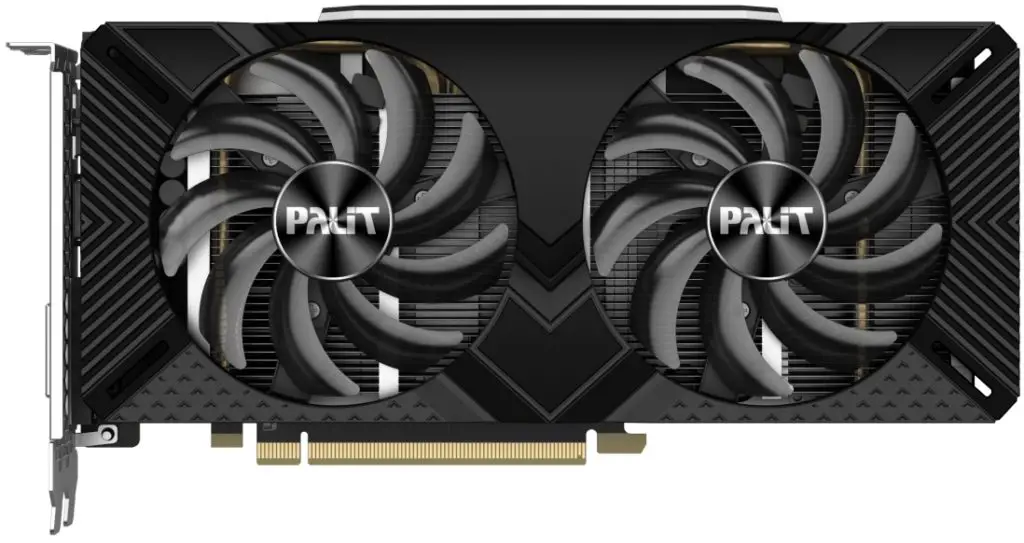
After the announcement of the RTX line, gamers and specialists were skeptical: the increase in power compared to previous generations was not cosmic, but the price tags were much higher. To the credit of NVIDIA, they quickly responded to the situation, first dropping the price, and then releasing an updated version of the RTX 2060 with the significant prefix SUPER. And it turned out really super: the novelty increased the GPU blocks, acquired a 256-bit bus and two additional gigabytes of memory. The new video adapter turned out to be 13 – 15% faster than the predecessor GeForce RTX 2060 , and by 19% in heavy games. And as a result, it turned out to be a complete analogue of the GeForce RTX 2070 , if we compare the performance only at standard frequencies.
You May Also Like: Best Graphics Card Under 1000 Dollars
Compared to AMD rivals, Palit’s GeForce RTX 2060 SUPER is in the middle between the Radeon RX 5700 and Radeon RX 5700 XT. In overclocking, it strengthens its position, since the forced Radeon RX 5700 XT shows minimal acceleration. Considering the possibility of increasing frequencies, the GeForce RTX 2060 SUPER and Radeon RX 5700 XT will be direct rivals, where an NVIDIA representative gains a little in power consumption.
Palit’s SUPER DUAL variant is positioned as a relatively inexpensive modification of the RTX 2060 and makes a good impression. In addition to price, its main advantage is an efficient 2-fan cooling system. It works very quietly not only in the nominal mode when automatically adjusting the speed of rotation of the blades, but also during acceleration. Other advantages include a simple LED-backlight, relatively compact dimensions and a small factory overclock. In many respects, it is not inferior to even more expensive modifications. You can only find fault with the throttle noise during high load and weak overclocking potential. Squeeze more than 7% of the core, we did not work. However, this is a feature of the SUPER model itself, which almost completely works out of the box.
Conclusion
In conclusion, there are a number of great graphics cards available. Above we have tell you the best graphics card under 400$. While there are some great options from NVIDIA and AMD, the best card for your needs may vary depending on your specific requirements. Make sure to do your research before making a purchase, and be sure to factor in things like price, performance, and power consumption.
Thanks for reading! If you have any questions or comments, please feel free to share them below.